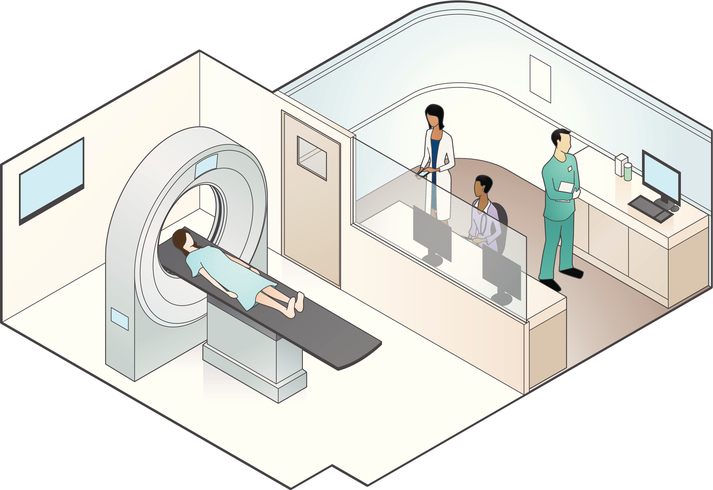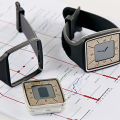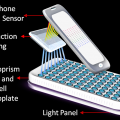
Leading researchers in radiology shared their vision for the marriage between radiology and super-smart computers at the recently-concluded annual meeting of the Radiological Society of America in Chicago.
Computer-aided diagnosis has myriad functions, but two primary goals reign in the radiology sphere. One is to find, extract and quantify information that is there in the images, be they CT, MRI or PET scans, but that is not evident by viewing alone. Features like tissue textures, shape and signal intensities are picked up by CAD technology to help guide diagnosis, and further, help predict the progression of the disease and best treatment options.
The second broad goal is to mine the available database of cases to find matches for particular patients and their pathology. For example, a patient’s genetic profile, combined with the specific type of pathology and imaging characteristics of that pathology, may be compared with a bank of cases that match across all three of these variables. This provides more information than a physician could possibly obtain from viewing an image alone, and should inform better treatment decisions.
Dr. Stephen Yip of the Dana-Farber Cancer Institute discussed CAD and the use of biomarkers in cancer patients. He analyzes specific mutations that have occurred in a tumor by parsing the information obtained from structural and molecular imaging.
“If we know which mutations are sensitive to which drugs, we can then prescribe accurately for that cancer,” he said last week.
The benefits to making these matches and running analytics through a cloud-based system are exponential.
“If a car with one driver has an accident, one person learns from it. When a self-driving car has an accident every self-driving car learns.” explained Dr. Gordon Harris, Director of 3D Imaging Services and a Harvard Medical School professor, operates the Radiology Computer Aided Diagnostics Lab
Most attending the session were wowed by the speakers who were all physicians immersed in bringing the power of intricate image analysis, cloud-based big data, and self-improving algorithms to the aid of radiologists. However, not everyone was warmed by the prospects of CAD “unleashed.”
Some radiologists see CAD technology leading an over-eager CMS and insurers to mandate premature and inflexible test and treatment protocols. They see current impingements on physicians’ judgment hastened by CAD, if the technology is relied upon on too soon and too broadly.
Dr. Harris, however, thinks the skepticism may be unwarranted.
“Things that come along that help radiologists do a better job of diagnosing, help referring physicians know what radiology test to order, help patients, and are cost-effective will be sustained over time,” he said. “Things that don’t may have a period of enthusiasm but then fade.”
Others like Dr. Daniele Regge of University of Tornio, Italy, clearly champions CAD as a means of being proactive instead of reactive to health challenges. CAD assists in making what he describes as “P4 medicine” — participative, preventive, precise and predictive — a reality, enabling the medical community to use pre-symptomatic markers to anticipate and treat people before they get sick.
Radiologists and session attendees Dr. Michele Nemery and Dr. Anette Savnik from Copenhagen expressed mixed feelings about what CAD will mean for their practices, but see its use as a fact of life.
“It will generate insights we can’t do ourselves…a new way of understanding data,” said Dr. Nemery , who views CAD as creating value for the patient. “It’s going places where we haven’t been. Does it replace radiologists? To some degree, yes. I see it as a tool and a replacement for many tasks radiologists do.”
Dr. Savnik revealed that ” We are starting a research study at my university to see how we can use artificial intelligence to enhance our results.” When asked if she was enthusiastic, she responded, “The better description is ‘curious’.” Dr. Nemery chimed in, ” I’m enthusiastic, but I am telling my children, don’t become doctors, if you picture having the medical decisions in your hands. It won’t happen. A lot of doctors will be health
When asked if she was enthusiastic, she responded, “The better description is ‘curious’.” Dr. Nemery chimed in, ” I’m enthusiastic, but I am telling my children, don’t become doctors, if you picture having the medical decisions in your hands. It won’t happen. A lot of doctors will be health
Dr. Nemery chimed in, ” I’m enthusiastic, but I am telling my children, don’t become doctors, if you picture having the medical decisions in your hands. It won’t happen. A lot of doctors will be health technicians or the brightest ones will be clinical data scientists…in essence, transformed radiologists.”
Photo: mathisworks, Getty Images
Shares3



